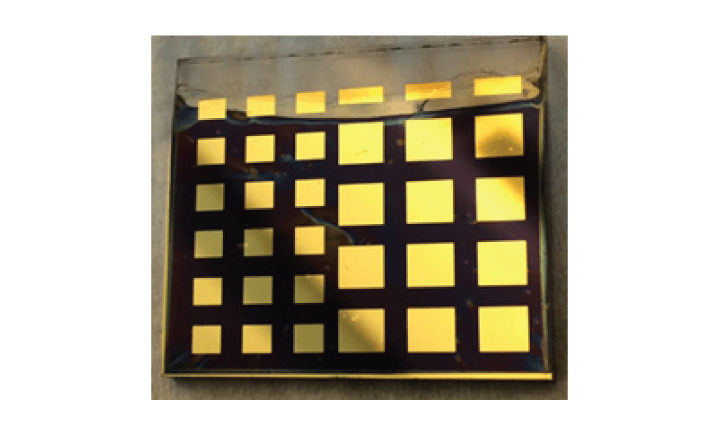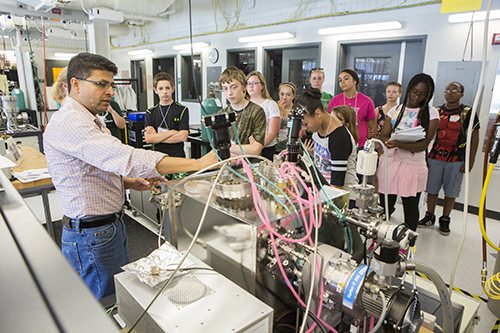Natural, flexible solar cells that last
Assistant professor Tara P. Dhakal is working on a new type of solar cell that could one day replace silicon-based solar panels with a natural and flexible material.

Assistant professor Tara P. Dhakal from the Electrical and Computer Engineering Department was recently awarded a National Science Foundation CAREER grant for his study “Toward Twenty Year Lifetime: Hermetic Sealing for Perovskite Solar Cells.”
The proposed research will work to create an alternative to traditional, silicon-based solar cells.
“Most solar cells are made from silicon and, while those solar cells are highly efficient, they have their limitations,” explained Dhakal.
Instead of silicon, Dhakal’s research will use perovskite solar cells.
Perovskite is a crystalline mineral found in nature that has shown the potential to create solar cells that are just as efficient as the silicon-based type.
“Unfortunately, the current versions of perovskite solar cells are typically fabricated with toxic lead,” Dhakal said. He wants to replace the toxic lead with non-toxic germanium, an element that was picked for a very specific reason.
“Germanium and lead both come from column 14 on the periodic table,” explained Dhakal. “Other researchers have tried, without success, to use tin for the same reason but I’ve found evidence that germanium has a better chance of success.”
If Dhakal is able to successfully replace the lead in the perovskite solar cells, they could prove to be more environmentally friendly than other solar cells.
However, even with the lead removed, there is another issue that could prevent perovskite solar cells from being deployed for an extended period of time.
That’s why Dhakal’s study will also be looking at ways to make perovskite solar cells last longer.
“Lead perovskite solar cells have only lasted for several months under ideal laboratory conditions. With my proposed sealing techniques, I predict that module lifetimes could be greater than 20 years,” said Dhakal.
With Dhakal’s seal on the perovskite solar cells, they could have the same shelf life that silicon solar cells do.
With the removal of lead and the proposed sealing, the cells will become more practical for use – something that Dhakal said will facilitate a wider reach for solar power.
“Silicon makes a robust solar cell but one thing it misses is flexibility,” he said. “The perovskite solar cells could be made on fabrics or plastics, which would make solar power much more accessible.”
Dhakal’s proposal was one of only 11 selected out of nearly 150 Electrical, Communications and Cyber Systems submissions for the award. The $500,000 funding is for five years of research.
Dhakal plans to advance this research while continuing to educate students and spread awareness about renewable energy to the broader community.



